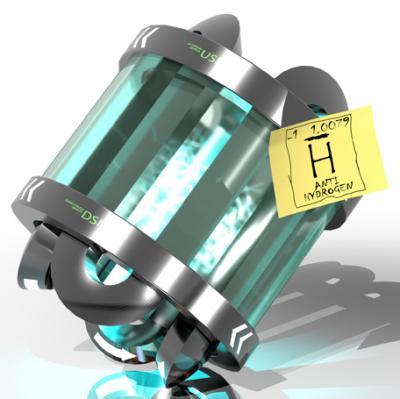Antimatter particles are routinely produced in particle accelerators as well as in space, but holding onto them, particularly the neutral ones, is difficult because antimatter and matter will annihilate on contact and conventional containers are made of matter.
The ALPHA collaboration at CERN demonstrated last year that they could instead use a magnetic trap to capture antihydrogen particles, and managed to store them for 172 milliseconds. The team now increase that period by more than 5,000-fold, meaning that the antihydrogen atoms have time to reach their ground state, rather than only existing in the highly excited states created by previous experiments, in which they are quickly annihilated.
Such long storage times allowed the first measurements of the characteristics of trapped anti-atoms, which provide information about the formation dynamics of antihydrogen atoms and their kinetic energy distribution. With anti-atom confinement now at 1,000 seconds, an interesting question becomes how long can anti-atoms be trapped?

Artistic representation of the ALPHA neutral antimatter trap, suggesting the nature of the ALPHA apparatus as a container for antihydrogen. Credit: Chukman So and copyright © 2011 Wurtele Research Group. All rights reserved.
Improved traps will potentially provide plenty of interaction time for future experiments to probe the anti-atoms' quantum nature with lasers or microwaves, or to cool them down to study the gravitational effects on antimatter. Although the physical set-ups are different, ALPHA's ability to hold anti-atoms in a magnetic trap for 1,000 seconds, and presumably longer, compares well to the length of time ordinary atoms can be magnetically confined.
"A thousand seconds is more than enough time to perform measurements on a confined anti-atom," Prof. Joel Fajans of U.C. Berkeley Lab's Accelerator and Fusion Research Division. "For instance, it's enough time for the anti-atoms to interact with laser beams or microwaves." He jokes that, at CERN, "it's even enough time to go for coffee."
The ALPHA Collaboration not only made and stored the long-lived antihydrogen atoms, it was able to measure their energy distribution. A program of upgrades is being planned that will allow experiments not possible with the current ALPHA apparatus. At present the experimenters don't have laser access to the trap. Lasers are essential for performing spectroscopy and for "cooling" the antihydrogen atoms (reducing their energy and slowing them down) to perform other experiments.
Fajans says, "We hope to have laser access by 2012. We're clearly ready to move to the next level."
Citation: The ALPHA Collaboration, 'Confinement of antihydrogen for 1,000 seconds', Nature, June 5, 2011, DOI: 10.1038/NPHYS2025





Comments